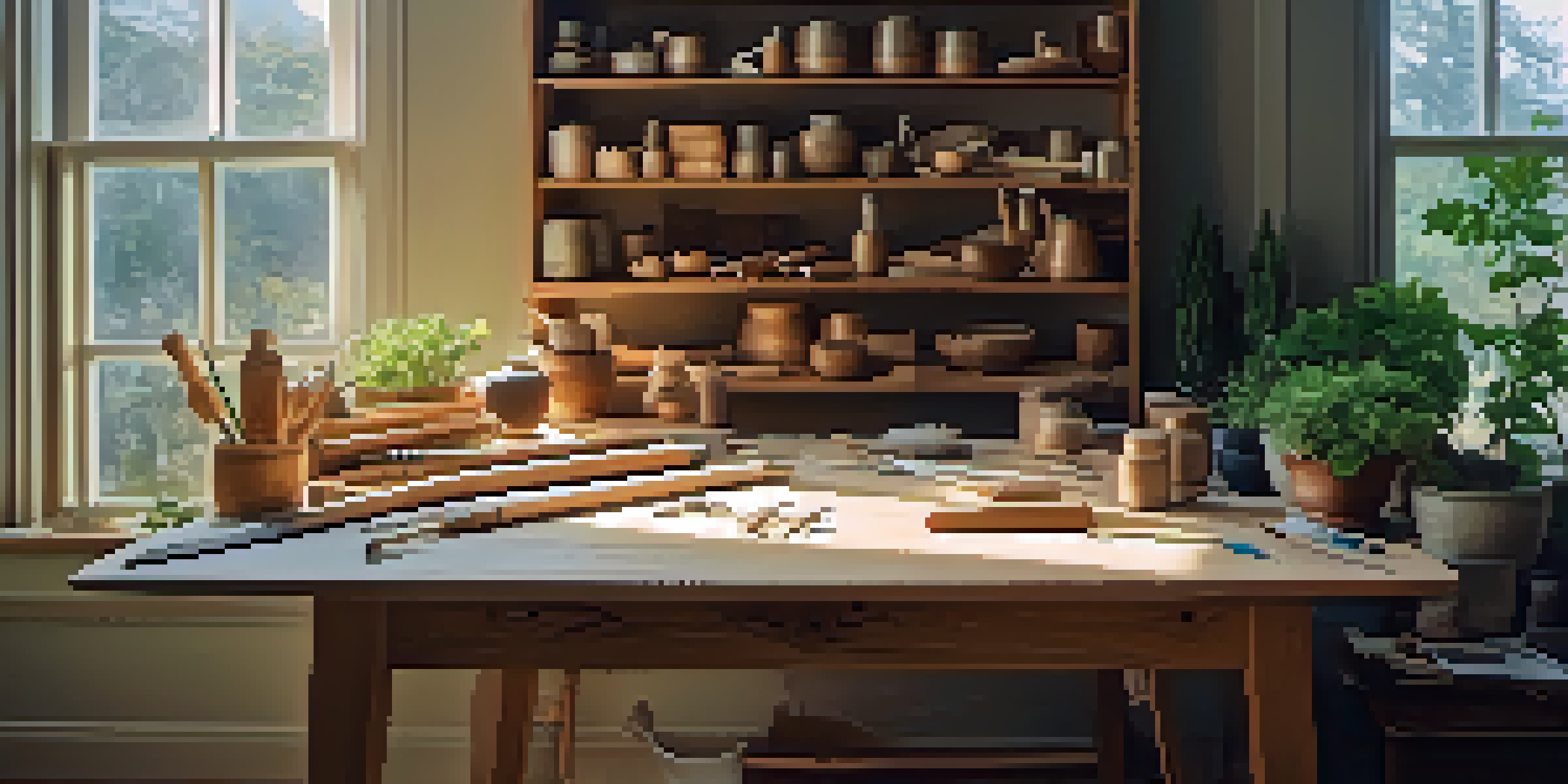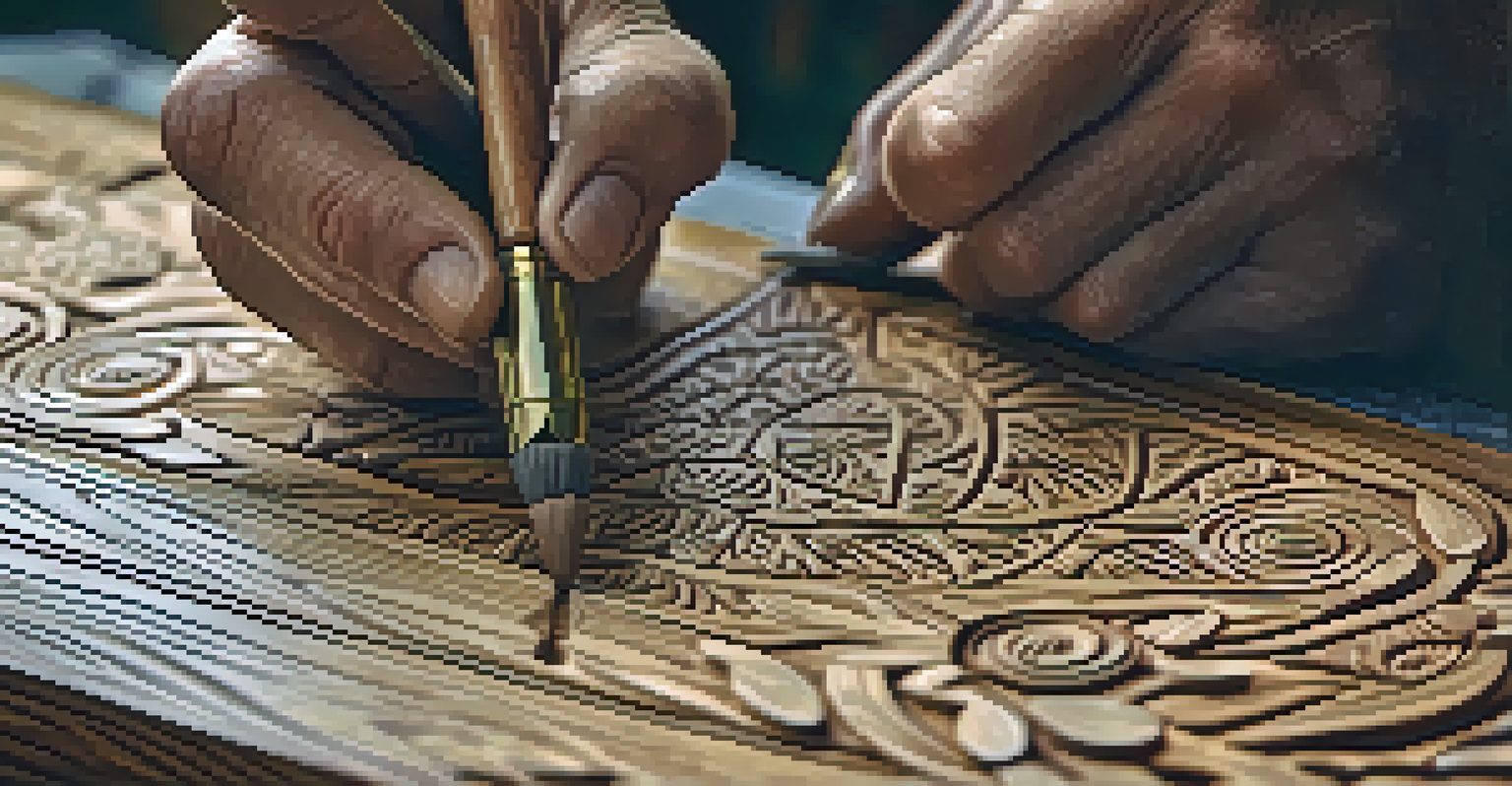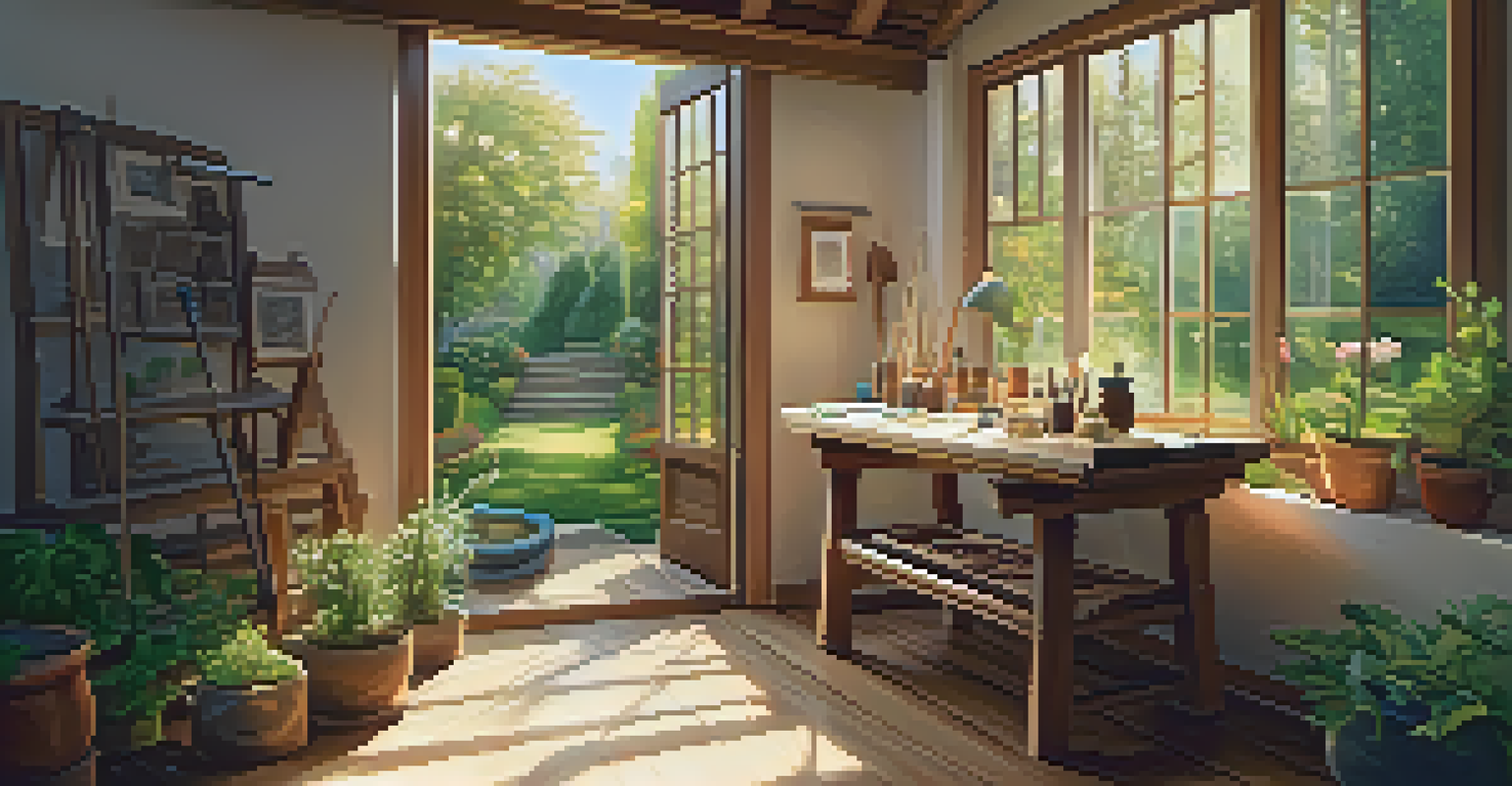Transformative Carving: A Mindfulness Approach to Well-Being

The Art of Carving: More Than Just a Hobby
Carving is often viewed as a craft, but it holds deeper significance. It offers a unique blend of creativity and focus, allowing individuals to channel their thoughts into tangible art. This transformative process can help in cultivating mindfulness—a state of active, open attention to the present moment.
Art is not freedom from discipline, but disciplined freedom.
When you carve, each stroke of the tool requires your full attention. As you shape the material, whether wood or stone, you engage in a form of meditation that pulls you away from distractions. This immersion can lead to a profound sense of relaxation and mental clarity.
Moreover, the act of creating something with your hands fosters a connection between your mind and body. It’s not just about producing a piece of art; it’s about the journey, the process, and the mindfulness that comes along with it.
Mindfulness Defined: Understanding Its Essence
Mindfulness is the practice of being fully present in the moment, which can significantly enhance your overall well-being. It involves observing your thoughts, feelings, and surroundings without judgment. This practice can lead to reduced stress and improved emotional health.

At its core, mindfulness encourages you to slow down and savor each experience. Imagine sipping a warm cup of tea; instead of gulping it down, you take a moment to appreciate the warmth, aroma, and flavor. This simple act can shift your mindset and bring a sense of peace.
Carving Enhances Mindfulness
The process of carving promotes mindfulness by requiring full attention and helping to alleviate distractions.
Incorporating mindfulness into daily activities—like carving—can be incredibly beneficial. It transforms mundane tasks into opportunities for reflection and growth, making life feel richer and more fulfilling.
The Mind-Body Connection in Carving
Engaging in carving promotes a strong mind-body connection. As you carve, your brain is actively involved in planning, creating, and problem-solving, while your hands execute the physical movements. This synergy can enhance your cognitive functions and emotional balance.
Mindfulness isn't difficult. We just need to remember to do it.
When you're focused on the intricacies of carving, you're less likely to dwell on past worries or future anxieties. This focus allows you to experience a sense of flow—a mental state where you lose track of time and feel completely absorbed in the activity.
By fostering this connection, carving becomes a powerful tool for self-discovery and emotional expression. You might find that the pieces you create reflect your thoughts and feelings, offering insights into your inner world.
Stress Relief Through Creative Expression
One of the most significant benefits of carving is its ability to relieve stress. The rhythmic motions of carving can be incredibly soothing, much like the repetitive motions of knitting or painting. This repetitive action can lull you into a meditative state, reducing anxiety and tension.
Additionally, creative expression is known to release endorphins—your body’s natural feel-good chemicals. As you see your creation take shape, a sense of accomplishment floods in, further alleviating stress and promoting positive emotions.
Creative Expression Relieves Stress
Engaging in carving serves as a soothing outlet for stress relief and emotional expression.
Incorporating regular carving sessions into your routine can serve as a healthy outlet for stress relief. It’s an opportunity to escape the chaos of daily life and immerse yourself in a calming, creative process.
Building Patience and Focus Through Carving
Carving is not a quick process; it requires patience and precision. As you work on a piece, you learn to take your time, which can be a valuable life lesson. This cultivation of patience can extend beyond the carving bench and into your daily life.
Similarly, the focus required in carving can sharpen your concentration skills. In a world filled with distractions, honing your ability to concentrate can lead to increased productivity and a deeper appreciation for the tasks at hand.
Over time, you may find that your patience and focus improve not just in your carving practice, but in various aspects of your life, from work to personal relationships.
Creating a Mindful Space for Carving
To fully embrace the benefits of carving and mindfulness, it’s essential to create a conducive environment. A dedicated space, free from distractions, allows you to immerse yourself in the creative process. Consider adding calming elements like natural light, plants, or soothing music to enhance your experience.
Setting the mood is crucial; it helps signal your brain that it’s time to focus and unwind. The right atmosphere can anchor your mind, making it easier to transition into a state of mindfulness as you carve.
Builds Patience and Focus
Carving cultivates patience and concentration, skills that extend beyond the craft into everyday life.
When you have a mindful space, each carving session becomes a sanctuary. It’s a personal retreat where you can explore your creativity and reconnect with yourself.
Embracing the Journey: Carving as a Mindfulness Practice
Ultimately, carving is about the journey, not just the destination. Each piece you create is a reflection of your growth and experiences. Embracing this journey allows you to appreciate the process, fostering a sense of fulfillment and joy.
As you carve, remember to celebrate the small victories—whether it’s mastering a new technique or completing a challenging piece. These moments of triumph can boost your confidence and inspire you to continue exploring your creativity.

Incorporating carving into your mindfulness practice can lead to lasting benefits for your well-being. It’s a beautiful way to cultivate awareness, relieve stress, and enrich your life—one stroke at a time.